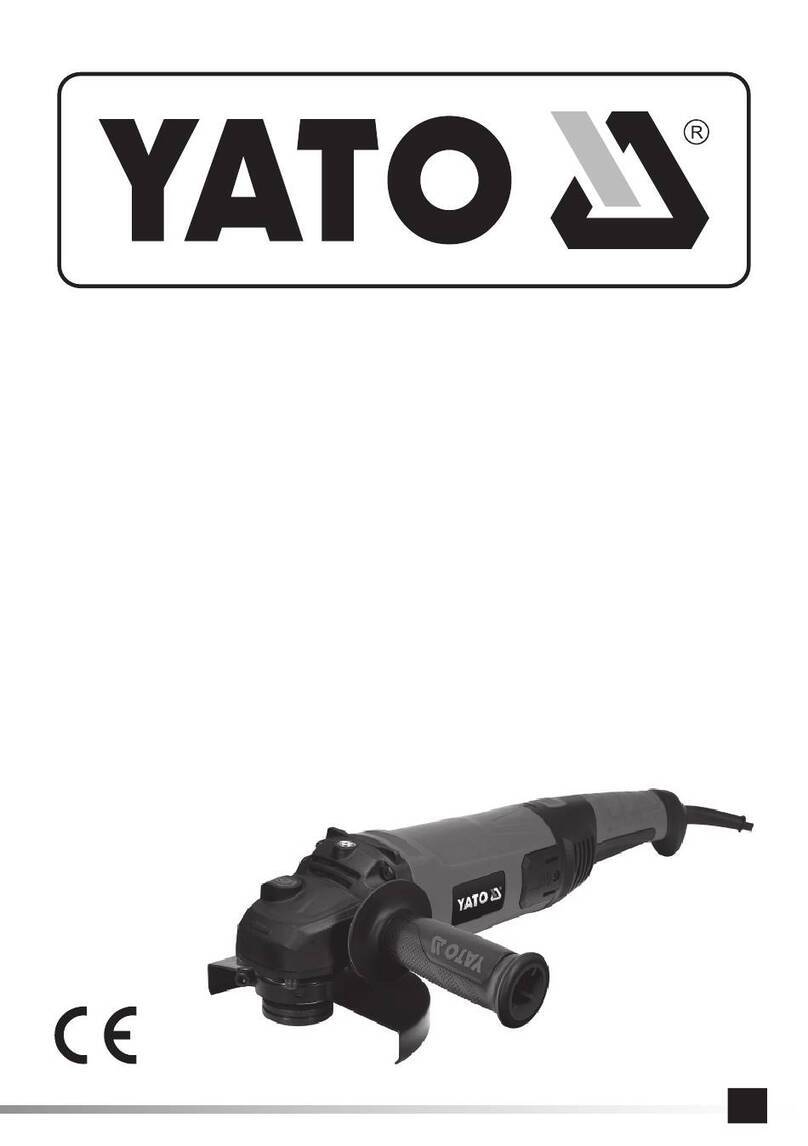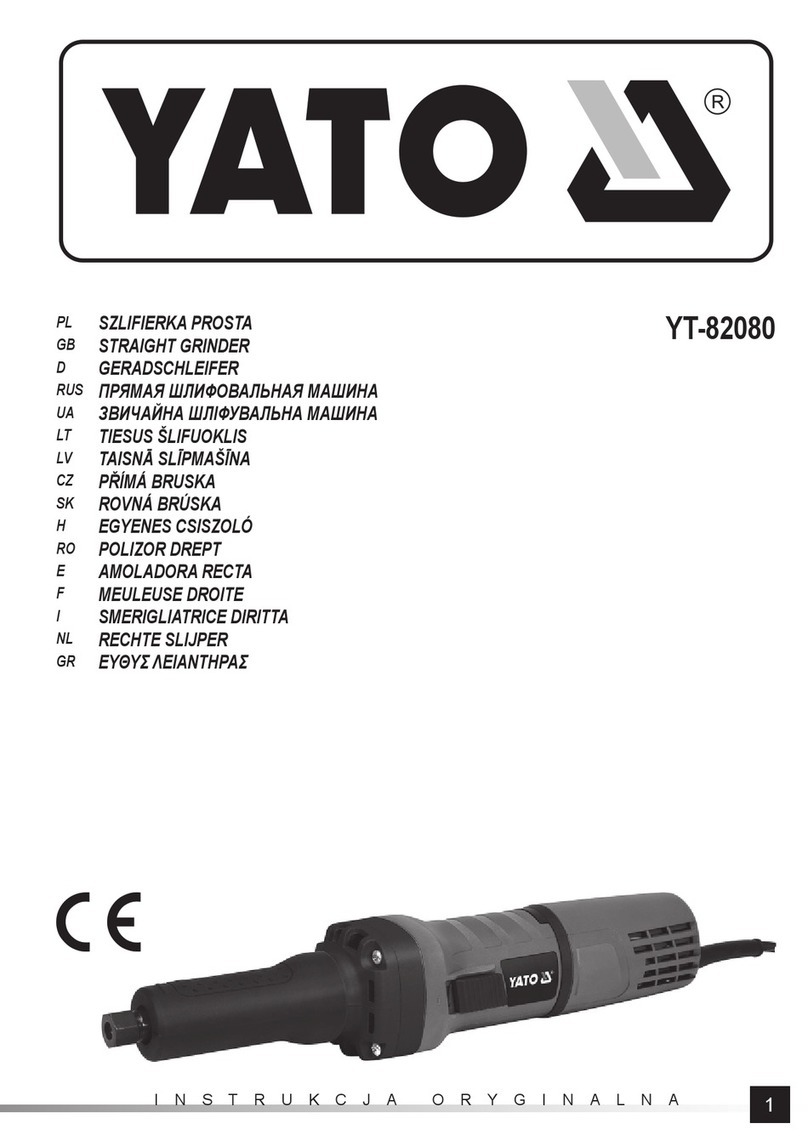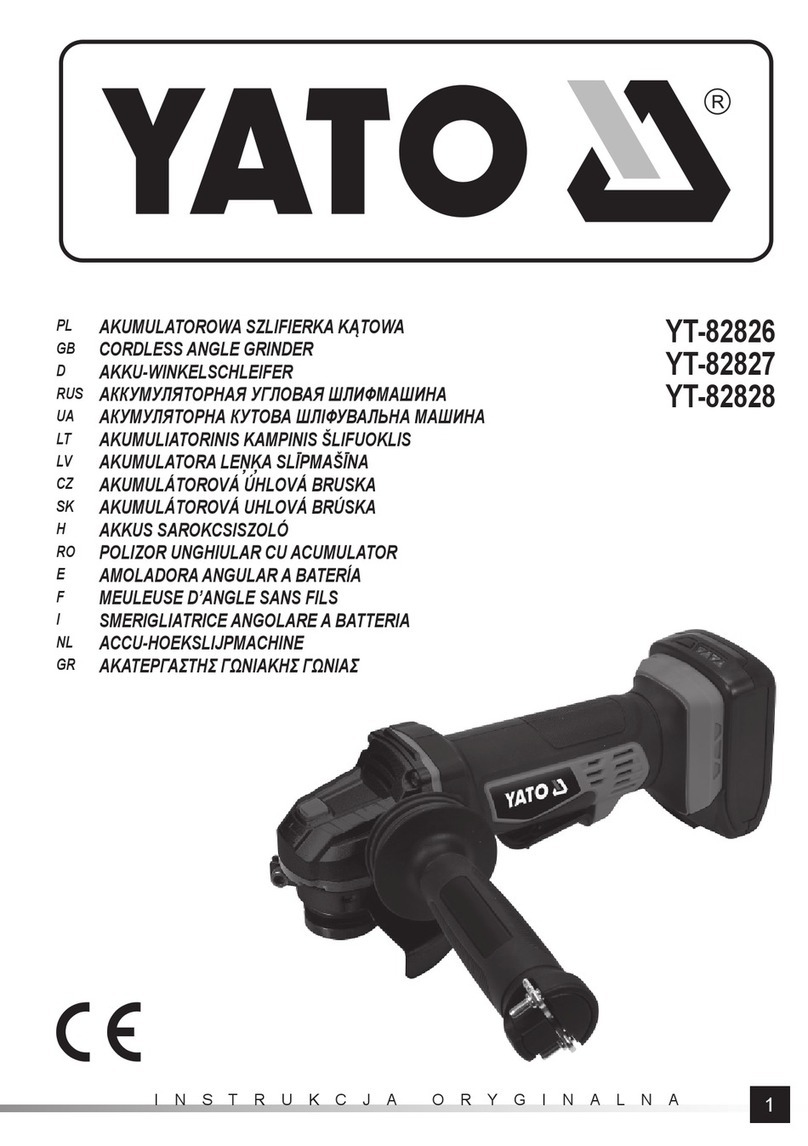
INSTRUKCJA ORYGINALNA 5
PL GB D RUS UA LT LV CZ SK H RO E
ОХРАНА ОКРУЖАЮЩЕЙ СРЕДЫ
Данный символ обозначает селективный сбор изношенной электрической иэлектронной аппаратуры. Изношенные электроустройства – вторичное сырье, в
связи счем запрещается выбрасывать их вкорзины сбытовыми отходами, поскольку они содержат вещества, опасные для здоровья иокружающей среды! Мы
обращаемся кВам спросьбой об активной помощи вотрасли экономного использования природных ресурсов иохраны окружающей среды путем передачи
изношенного устройства всоответствующий пункт хранения аппаратуры такого типа. Чтобы ограничить количество уничтожаемых отходов, необходимо
обеспечить их вторичное употребление, рециклинг или другие формы возврата.
ОХОРОНА НАВКОЛИШНЬОГО СЕРЕДОВИЩА
Вказаний символ означає селективний збір спрацьованої електричної та електронної апаратури. Спрацьовані електропристрої євторинною сировиною, узвязку
зчим заборонено викидати їх усмітники зпобутовими відходами, оскільки вони містять речовини, що загрожують здоровю та навколишньому середовищу!
Звертаємося до Вас зпросьбою стосовно активної допомоги угалузі охорони навколишнього середовища та економного використання природних ресурсів шляхом
передачі спрацьованих електропристроїв увідповідний пункт, що займається їх переховуванням. Зметою обмеження обєму відходів, що знищуються, необхідно
створити можливість для їх вторинного використання, рециклінгу або іншої форми повернення до промислового обігу.
KÖRNYEZETVÉDELEM
A használt elektromos és elektronikus eszközök szelektív gyűjtésére vonatkozó jelzés: A használt elektromos berendezések újrafelhasználható nyersanyagok – nem szabad
őket a háztartási hulladékokkal kidobni, mivel az emberi egészségre és a környezetre veszélyes anyagokat tartalmaznak! Kérjük, hogy aktívan segítse a természeti források-
kal való aktív gazdálkodást az elhasznált berendezéseknek a tönkrement elektromos berendezéseket gyűjtőpontra történőbeszállításával. Ahhoz, hogy a megsemmisítendő
hulladékok mennyiségének csökkentése érdekében szükséges a berendezések ismételt vagy újra felhasználása, illetve azoknak más formában történővisszanyerése.
OCHRONA ŚRODOWISKA
Symbol wskazujący na selektywne zbieranie zużytego sprzętu elektrycznego i elektronicznego. Zużyte urządzenia elektryczne sąsurowcami wtórnymi - nie wolno wyrzucać
ich do pojemników na odpady domowe, ponieważzawierająsubstancje niebezpieczne dla zdrowia ludzkiego i środowiska! Prosimy o aktywnąpomoc w oszczędnym gospo-
darowaniu zasobami naturalnymi i ochronie środowiska naturalnego przez przekazanie zużytego urządzenia do punktu składowania zużytych urządzeńelektrycznych. Aby
ograniczyćilość usuwanych odpadów konieczne jest ich ponowne użycie, recykling lub odzysk w innej formie.
UMWELTSCHUTZ
Das Symbol verweist auf ein getrenntes Sammeln von verschlissenen elektrischen und elektronischen Ausrüstungen. Die verbrauchten elektrischen Geräte sind Sekundär-
rohstoffe – sie dürfen nicht in die Abfallbehälter für Haushalte geworfen werden, da sie gesundheits- und umweltschädigende Substanzen enthalten! Wir bitten um aktive
Hilfe beim sparsamen Umgang mit Naturressourcen und dem Umweltschutz, in dem die verbrauchten Geräte zu einer Annahmestelle für solche elektrischen Geräte gebracht
werden. Um die Menge der zu beseitigenden Abfälle zu begrenzen, ist ihr erneuter Gebrauch, Recycling oder Wiedergewinnung in anderer Form notwendig.
OCHRANA ŽIVOTNÉHO PROSTREDIA
Symbol poukazuje na nutnosťseparovaného zberu opotrebovaných elektrických a elektronických zariadení. Opotrebované elektrické zariadenia sú zdrojom druhotných
surovín – je zakázané vyhadzovaťich do kontejnerov na komunálny odpad, nakoľko obsahujú látky nebezpečné ľudskému zdraviu a životnému prostrediu! Prosíme o
aktívnu pomoc pri hospodárení s prírodnými zdrojmi a pri ochrane životného prostredia tým, že opotrebované zariadenia odovzdáte do zberného strediska opotrebovaných
elektrických zariadení. Aby sa obmedzilo množstvo odpadov, je nutné ich opätovné využitie, recyklácia alebo iné formy regenerácie.
OCHRANA ŽIVOTNÍHO PROSTŘEDÍ
Symbol poukazuje na nutnost separovaného sběru opotřebovaných elektrických a elektronických zařízení. Opotřebovaná elektrická zařízení jsou zdrojem druhotných
surovin – je zakázáno vyhazovat je do nádob na komunální odpad, jelikož obsahují látky nebezpečné lidskému zdraví a životnímu prostředí! Prosíme o aktivní pomoc při
úsporném hospodaření s přírodními zdroji a ochraněživotního prostředí tím, že odevzdáte použité zařízení do sběrného střediska použitých elektrických zařízení. Aby se
omezilo množství odpadů, je nevyhnutné jejich opětovné využití, recyklace nebo jiná forma regenerace.
VIDES AIZSARDZĪBA
Simbols rāda izlietoto elektrisko un elektronisko iekārtu selektīvu savākšanu, Izlietotas elektriskas iekārtas ir otrreizējas izejvielas – nevar būt izmestas ar mājsaimniecības
atkritumiem, jo satur substances, bīstamas cilvēku veselībai un videi! Lūdzam aktīvi palīdzēt saglabāt dabisku bagātību un sargāt vīdi, pasniegšot izlietoto iekārtu izlietotas
elektriskas ierīces savākšanas punktā. Lai ierobežot atkritumu daudzumu, tiem jābūt vēlreiz izlietotiem, pārstrādātiem vai dabūtiem atpakaļcitāformā.
APLINKOS APSAUGA
Simbolis nurodo, kad suvartoti elektroniniai ir elektriniai įrenginiai turi būti selektyviai surenkami. Suvartoti elektriniai įrankiai, – tai antrinės žaliavos – jųnegalima išmesti į
namųūkio atliekųkonteinerį, kadangi savo sudėtyje turi medžiagųpavojingųžmgaus sveikatai ir aplinkai! Kviečiame aktyviai bendradarbiauti ekonomiškame natūraliųišteklių
tvarkyme perduodant netinkamąvartoti įrankįįsuvartotųelektros įrenginiųsurinkimo punktą. Šalinamųatliekųkiekiui apriboti yra būtinas jųpakartotinis panaudojimas,
reciklingas arba medžiagųatgavimas kitoje perdirbtoje formoje.
PROTEJAREA MEDIULUI
Simbolul adunării selective a utilajelor electrice şi electronice. Utilajele electrice uzate sunt materie primărepetată– este interzisăaruncarea lor la gunoi, deoarece conţin
substanţe dăunătoare sănătăţii omeneşti cât dăunătoare mediului! Vărugăm deci săaveţi o atitudine activăîn ceace priveşte gospodărirea economicăa resurselor naturale
şi protejarea mediului natural prin predarea utilajului uzat la punctul care se ocupăde asemenea utilaje electrice uzate. Pentru a limita cantităţile deşeurilor eliminate este
necesarăîntrebuinţatrea lor din nou , prin recyklind sau recuperarea în altăformă.
PROTECCIÓN DEL MEDIO AMBIENTE
El símbolo que indica la recolección selectiva de los aparatos eléctricos y electrónicos usados. ¡Aparatos eléctricos y electrónicos usados son reciclados – se prohíbe tirarlos
en contenedores de desechos domésticos, ya que contienen sustancias peligrosas para la salud humana y para el medio ambiente! Les pedimos su participación en la tarea
de la protección y de los recursos naturales y del medio ambiente, llevando los aparatos usados a los puntos de almacenamiento de aparatos eléctricos usados. Con el fin
de reducir la cantidad de los desechos, es menester utilizarlos de nuevo, reciclarlos o recuperarlos de otra manera.
ENVIRONMENTAL PROTECTION
Correct disposal of this product: This marking shown on the product and its literature indicates this kind of product mustn’t be disposed with household wastes at the end of
its working life in order to prevent possible harm to the environment or human health. Therefore the customers is invited to supply to the correct disposal, differentiating this
product from other types of refusals and recycle it in responsible way, in order to re - use this components. The customer therefore is invited to contact the local supplier office
for the relative information to the differentiated collection and the recycling of this type of product.















































